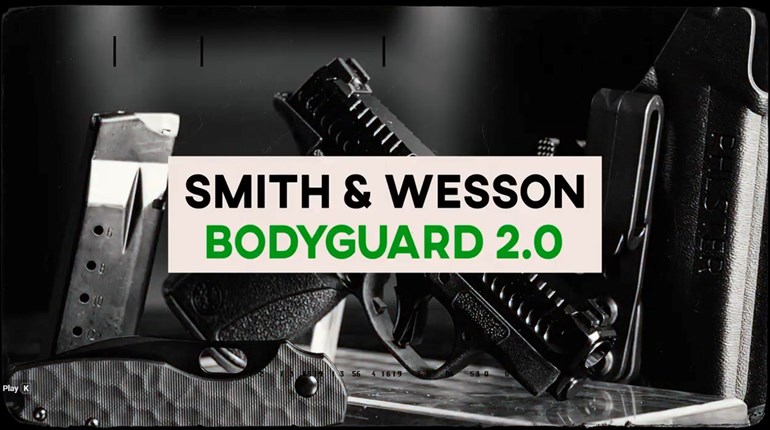
I’ll admit it. When I bought my first handgun, I wanted a semi-automatic, but I was a little intimidated by the prospect of racking a slide. And I’ll admit, too, that I have since shot some pistols where the magazine springs had such tension that reloading was not much fun.

Those two aspects of shooting can go a long way to helping someone not only decide whether to buy a gun, but also to determine how often they practice. With that in mind, gun makers over the years have tried to find solutions. When I entered the defensive handgun market about 20 years ago, Beretta’s answer was the Model 86, a variant of the Cheetah line that featured a tip-up barrel. It addressed all my concerns, but it isn’t the most consistent shot, likely because the barrel might move ever-so-fractionally between shots or during the firing process. The Model 86 will do the job, but you shouldn’t look for good groups at the range and I wouldn’t rely on it beyond 7 yards.
Fast forward to 2018, and Smith & Wesson takes the field with its M&P 380 Shield EZ. To modify an old adage: guns have come a long way, baby.

Smith & Wesson advertises this internal-hammer gun as having an easy-to-rack slide, easy-to-load magazine and easy-to-clean design. The slide boast is fair, as Smith uses a recoil spring that has nowhere near the tension specs of, say, a 9 mm full-size of your choice. The magazine claim is accurate, too, as the magazine style includes an external assist tab that makes loading a breeze. Its modular design allows for easy takedown, and the gun comes in two models, one with an external safety and one without.
But the big question had to be answered: How does it perform?
I went to the range and pitted the Shield EZ against my Model 86. The biggest advantage had to be one of the easiest reacquisition of sight picture that I have ever seen. When fired, the sights seem to go naturally back to line they were on when you pulled the trigger. For a simile, think of how a BMW 3 Series sedan almost drives itself on winding roads, like the car intuitively follows the lay of the asphalt.
Other pluses include, or course, reloading the magazine, which could be done in about half the time as with my Beretta. And shot groups were distinctly tighter. Heck, even if I rattled off a full magazine without really pausing to aim between shots, the spread was in the zone, whereas I’d undoubtedly drop one low with my Model 86.
Then there is the initial trigger pull. On the Beretta, presuming you have taken advantage of the tip-up barrel to chamber the first round, the Model 86 requires a much heavier double-action trigger pull than you’d ever have to use for the Smith & Wesson gun. (You can avoid the double-action trigger pull if you rack the slide to get the initial round chambered, but then you’d be walking around with a gun with the hammer back—not a good idea—or you can cock the hammer manually before you fire the first round.) The heavier trigger pull is not a bad thing, it’s just a distinction between the two guns.
The Beretta has some advantages, too. First is just a preference in that it fits my hand better. More importantly, I’ve never had trouble with any kind of ammunition in my Model 86. When I was shooting two types of FMJ rounds through the Shield EZ, I had misfeeds. A colleague experienced similar concerns and deduced that this model prefers heavier-weight ammunition. You can read his review here.
No problems cropped up with defensive rounds I fired. That underscores the good practice of testing the ammunition you plan to use when you carry for self-defense, and you should shoot a heavier round when practicing at the range.
In short, the Shield EZ would make a great first gun for someone, and it fills all the needs one would have for an everyday carry firearm.


































